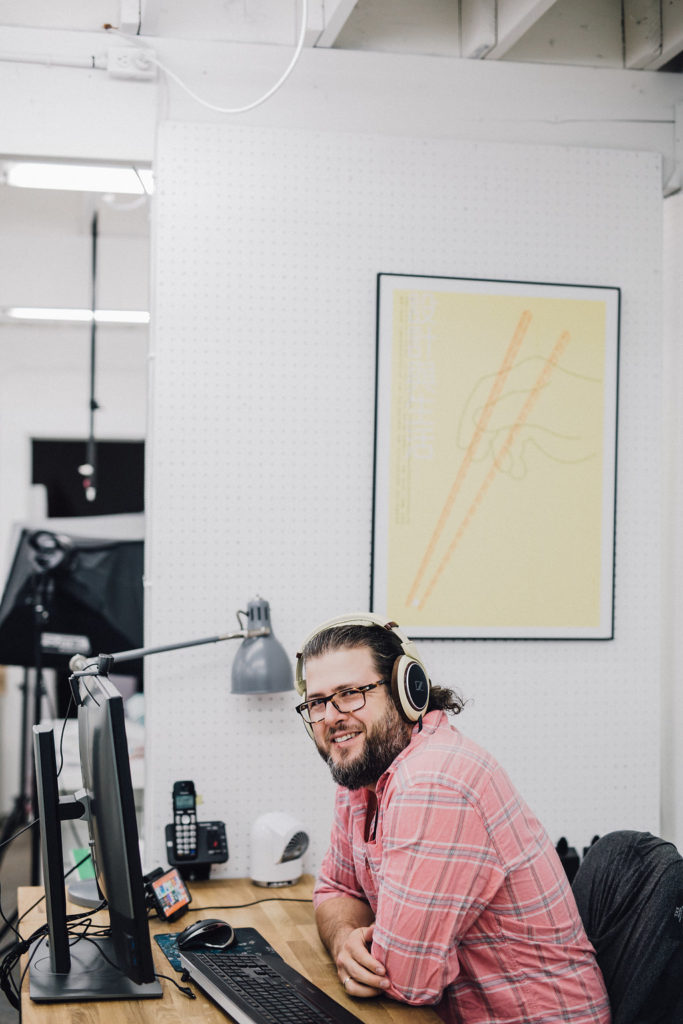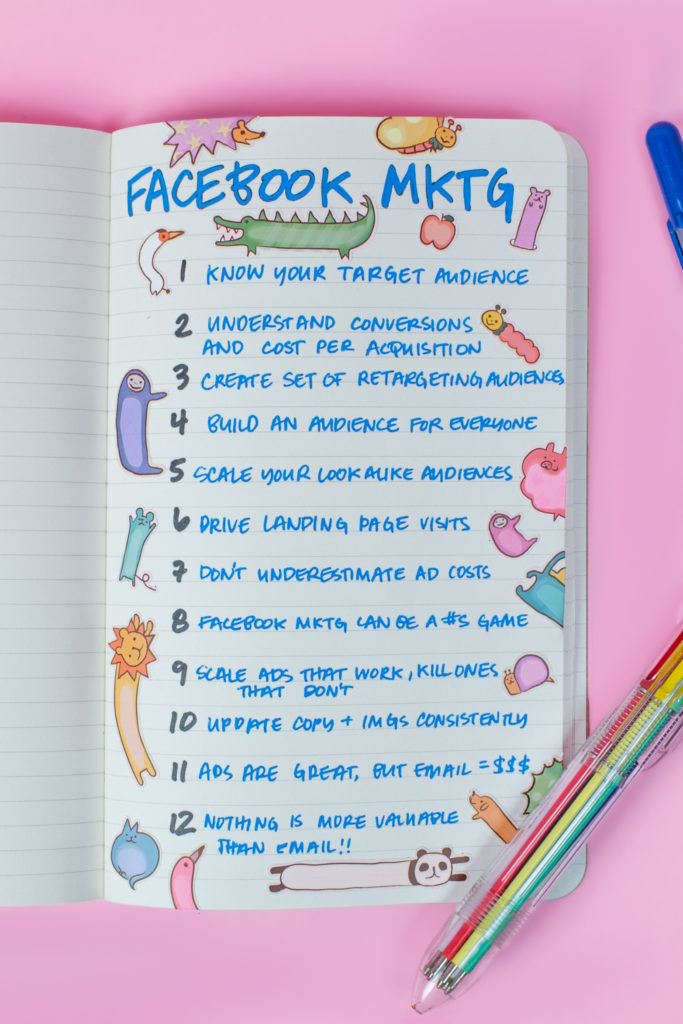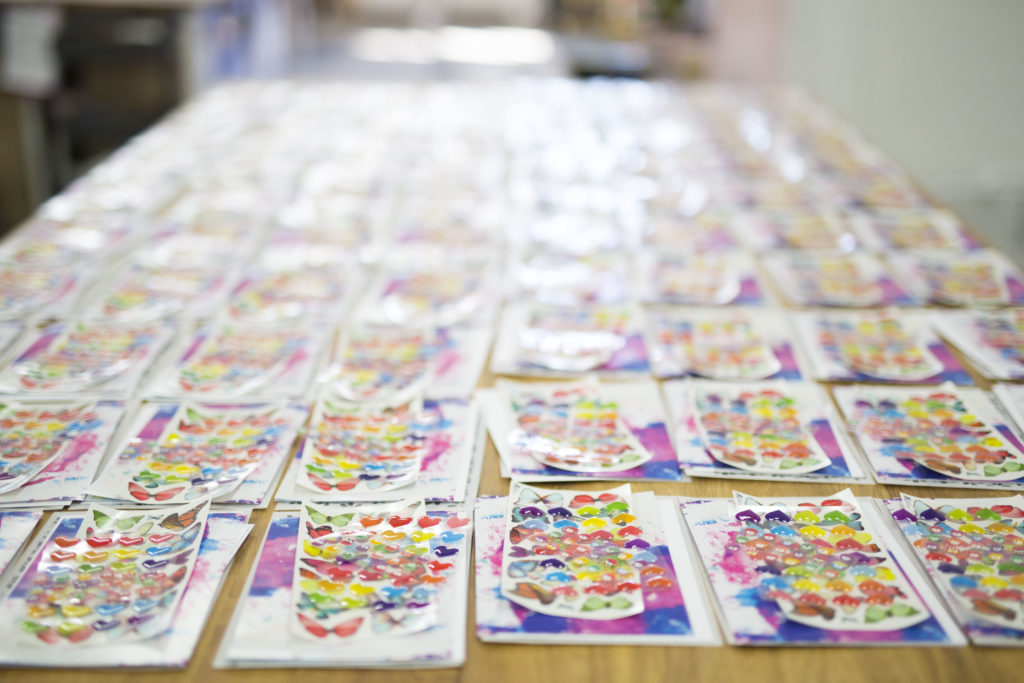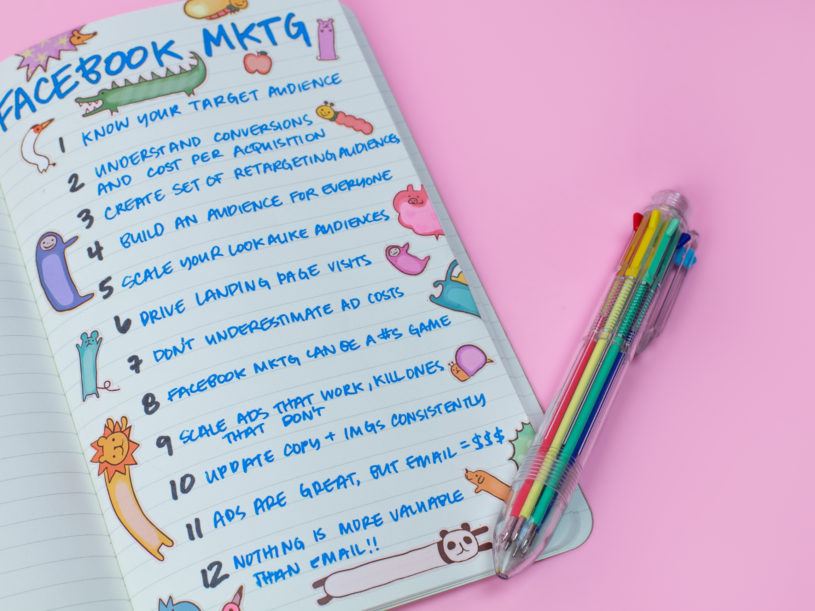Cratejoy’s merchants find growth success through various channels. Facebook marketing and ads remain among the most popular channels, and Nathan Vazquez from Pipsticks is a prime example of a merchant successfully utilizing Facebook marketing to scale their brand.
Entirely self-taught but with a background in finance, Nathan had no prior Facebook marketing experience. However, after Pipsticks had two unsuccessful bouts with hired marketing firms, Nathan decided to take things into his own hands.

After lots of trial and error, Nathan managed to grow Pipsticks’ Facebook page to over 34,000 likes (and counting!). Along the way, he gained valuable insight that he shared with Cratejoy’s marketing team. Keep reading for his first-hand recount of his top 12 Facebook marketing tips and tricks (in no particular order):
Facebook Marketing Tips & Tracks

> 1. Know Your Target Audience
When you’re starting out, it can be difficult to get Facebook ads working because you must use an interest-based audience. This means it’s even more crucial to know your target audience in detail. Be patient, and continue testing. It will get easier once you have a few sales and some site visitors.
> 2. Understand your conversions and CPA
Understand your numbers. The numbers that matter most are CPM (Cost per thousand impressions), Impressions (how many people saw your ad), CTR (click-through rate on your ad), and CPA (Cost Per Acquisition. Commonly also referred to as CAC, or CaAC – cost of acquisition). Make sure you have a solid understanding of relevancy, data sizes, and sample sizes. The, ask yourself three questions:
1. What is my CPM?
2. What is my click-through rate given my impressions?
3. What is my conversion rate on my clicks?
CPM/1000/CTR/Conversion rate = CPA. If your CPA is low enough, you’re making money. If it’s too high, figure out what part of the formula you can focus on to improve.
But remember, sample size is king! If you don’t have a few thousand impressions, your CPM is statistically meaningless (meaning it could very well be inaccurate reporting). If you have anything less than a few thousand clicks, your CTR is statistically meaningless. And until you’ve had a decent chunk of conversions, your conversion rate is also statistically meaningless.
Understand your numbers, but more importantly, understand when you can trust your numbers, and when they are just noise!
> 3. Create a set of retargeting audiences
These lists are the low-hanging fruit. They are a no-brainer to target because of the low effort on your end. Old customers, email subscribers, Facebook fans, website visitors, abandoned carts, and Instagram followers are your bread and butter here.
> 4. Build an audience for everyone
Gather up all your retargeting audiences and start to slice and dice them into cohorts of similar customers (everyone who bought one product, everyone who bought a gift product, the subscribers who lasted the longest, etc…). Build an audience in Facebook for each of these (and don’t use them yet!)
> 5. Scale Your Lookalike Audiences
Use those segmented audiences as the base for Facebook lookalike audiences. This is how you can scale your ad reach. Start with 0-1% audiences (which is about 2 million people if you just focus on the US).
> 6. Drive Landing Page Visits
Make sure to drive visits to the landing page from Facebook, because you can retarget these in more Facebook ads.
> 7. Don’t Underestimate Ad Costs
Ads in general cost money + time, but it is worth the upfront investment because you will get a better return and a better idea of what works and what doesn’t.
Make sure you have Google Analytics pixel tracking and Facebook pixels installed on your site before you do anything else.
Getting this all set up will cost you time, and can be very frustrating if you are not familiar with the tools. But it is more than worth the upfront investment. Without the analytics, you are just guessing.
> 8. Facebook Marketing Can Be a Numbers Game
People make the mistake of not spending enough. Facebook says you can test an ad at 5$ per day. You can, but until you have enough of a sample, you won’t know if an ad is working. If you can, invest at least $200-$300 to see if your audiences will work.
> 9. Scale Ads That Work, Kill Ones That Don’t
If an ad isn’t working, turn it off. If an ad is working, scale it as quickly as you can. And remember, if you change too many variables at once, you won’t know what is actually working.
> 10. “Facebook ads are great, but email is the money button.”
The relationship between Facebook and email is a two-way street. Facebook drives traffic, but most of the traffic you get won’t convert immediately. Make sure you are smart about collecting the emails of your visitors. You will convert them later (and unlike Facebook ads, sending an email is free!)
Acquiring high-quality email leads is critical, and building an automated way to convert those leads is a fantastic way to leverage upfront effort for a never-ending return. Once you’ve got automated drip campaigns that convert, the efficiency of every bit of Facebook traffic you send to your site is magnified. This means that every dollar you spend on FB is not only generating direct sales, but also gets you emails that generate sales later.
> 11. Update Copy and Images Consistently
Keeping ad copy and imagery fresh is crucial for keeping engagement high for ads. High-quality images and product shots are one of the most important things you can spend time and money on with your ad campaign.
> 12. “Nothing is more important or valuable than your email list.”
“If Pipsticks exploded and there was only one asset we could run away with, we would choose our Mailchimp list,” Nathan says.

Curious to find out more about Pipsticks’ story?
Check out their case study here!
Cratejoy is the premier all-in-one subscription eCommerce platform that provides everything you need to start your own subscription box business. Try it free for 14 days!




